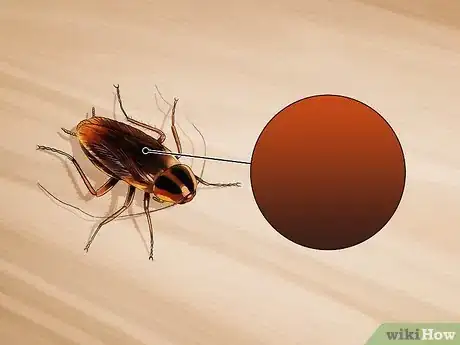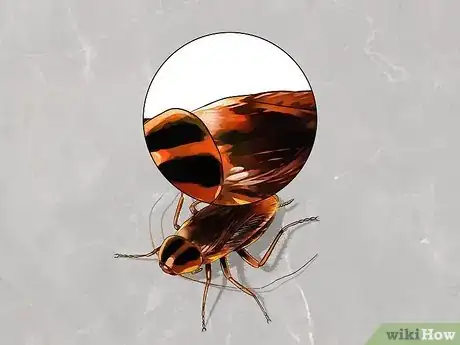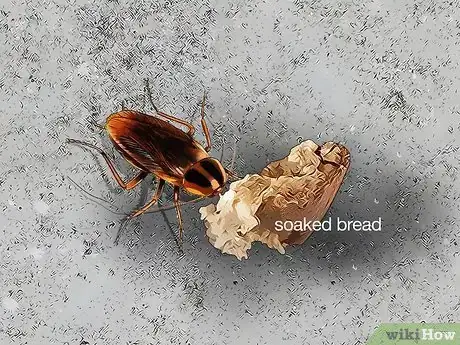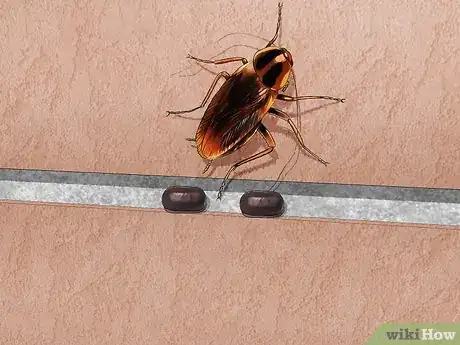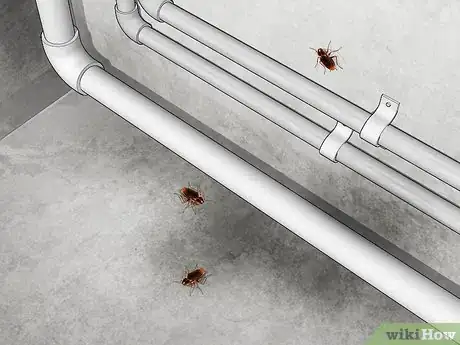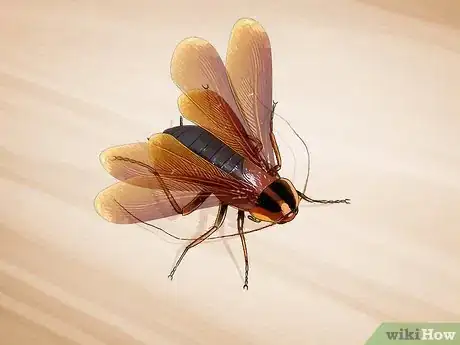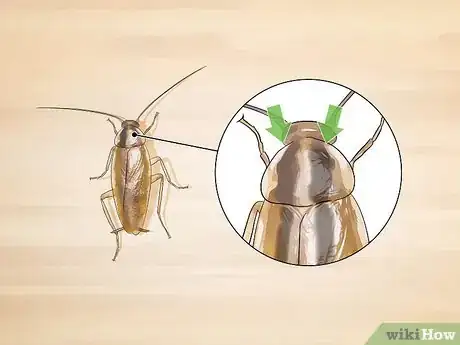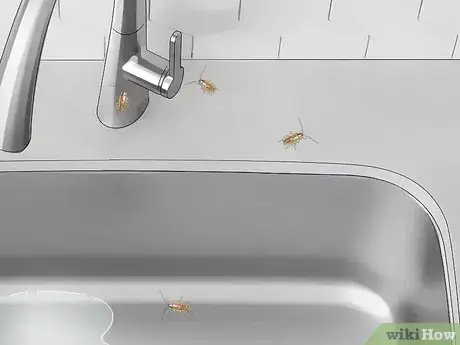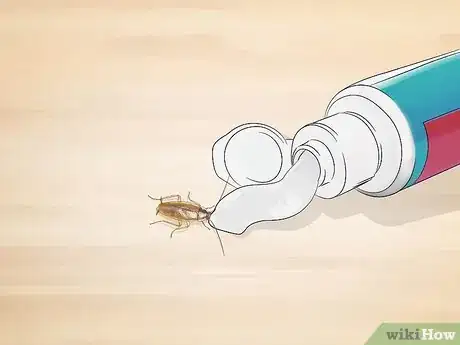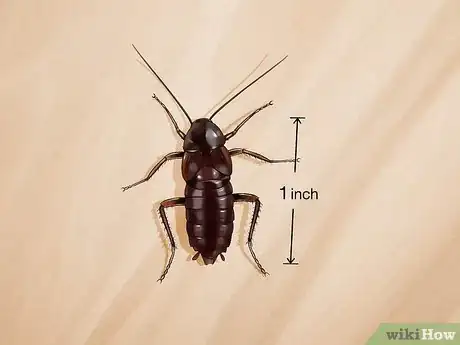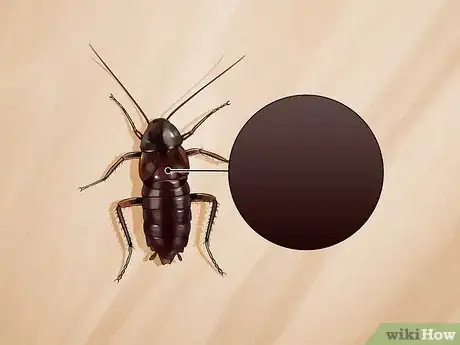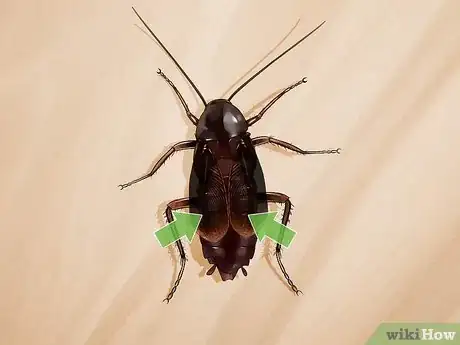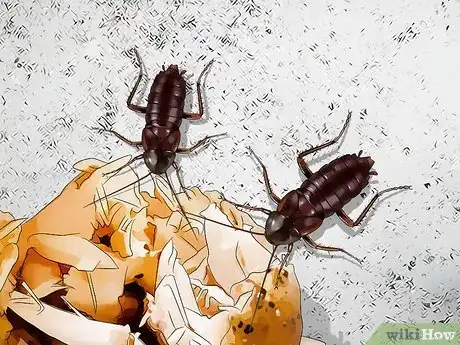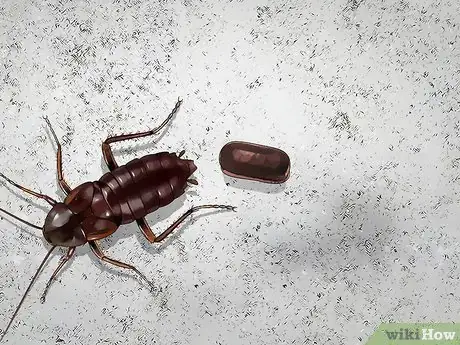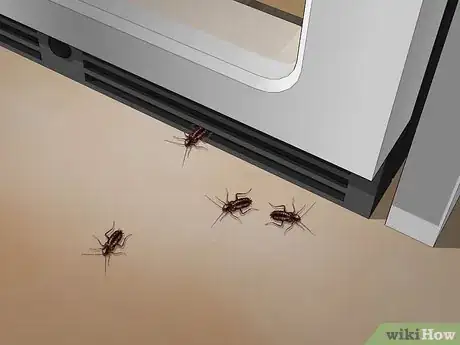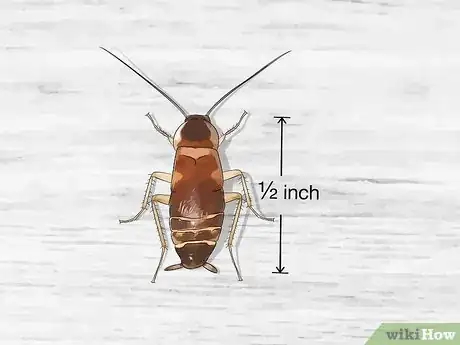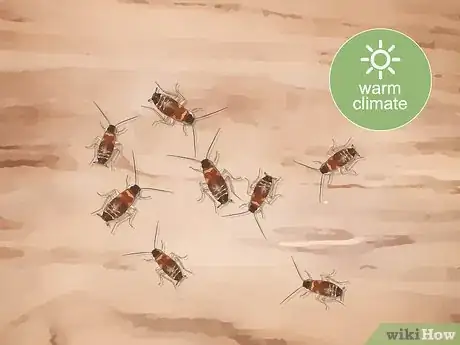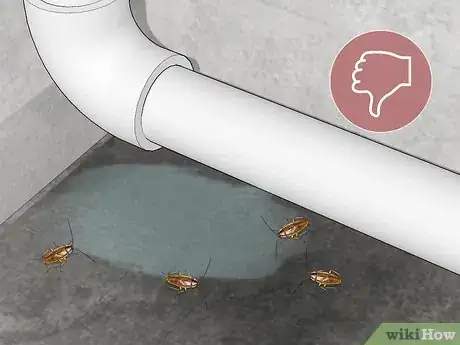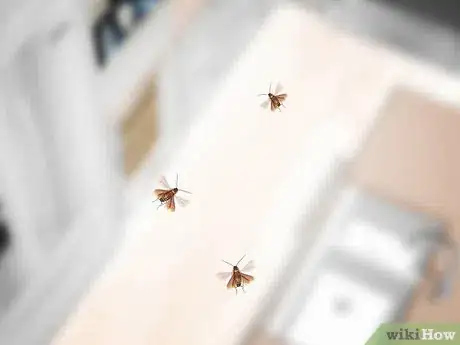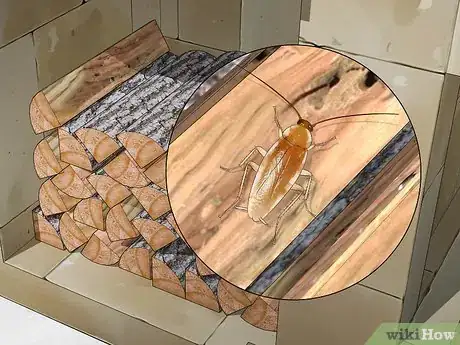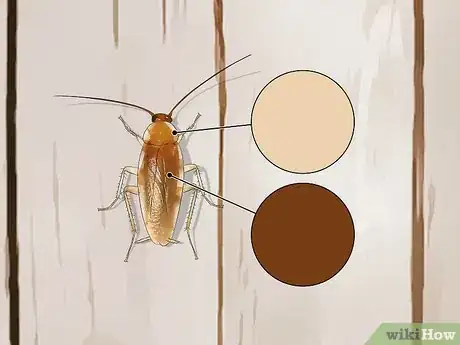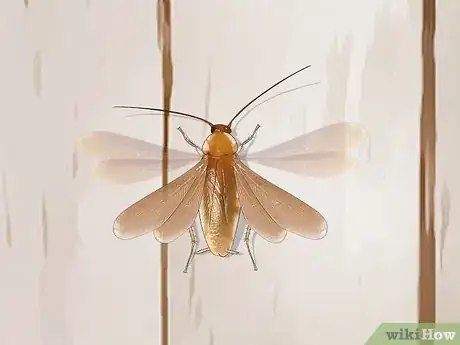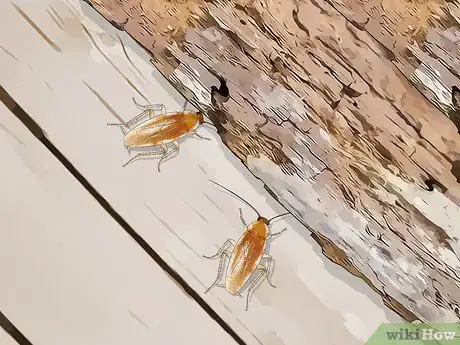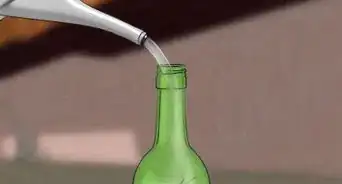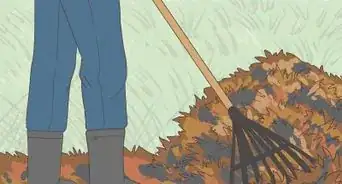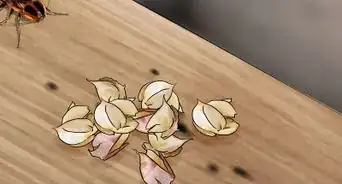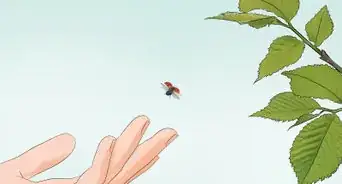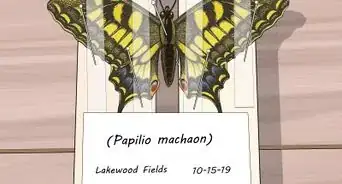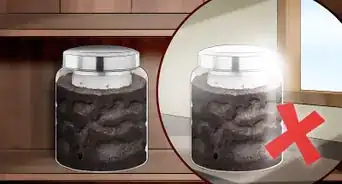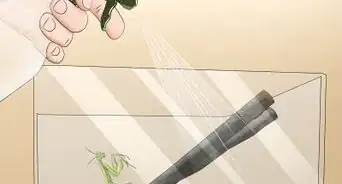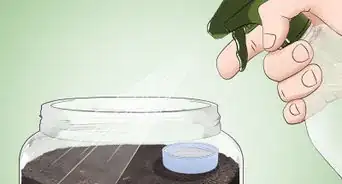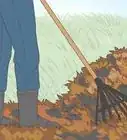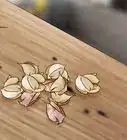This article was co-authored by Chris Parker and by wikiHow staff writer, Janice Tieperman. Chris Parker is the Founder of Parker Eco Pest Control, a sustainable pest control service in Seattle, Washington. With over seven years of experience, Chris specializes in Integrated Pest Management and doesn’t use any chemicals for pest removal. He offers removal services for ants, rodents, fleas, spiders, wasps, and more. Chris is a certified Commercial Pesticide Applicator in Washington State and received his bachelor’s from the University of Washington.
There are 15 references cited in this article, which can be found at the bottom of the page.
wikiHow marks an article as reader-approved once it receives enough positive feedback. This article received 12 testimonials and 100% of readers who voted found it helpful, earning it our reader-approved status.
This article has been viewed 1,025,594 times.
Long after humanity has ended, cockroaches will still roam the earth. However, this fact does not mean that they need to roam your house for very long. Many people don't know that there are actually four kinds of indoor cockroaches that are categorized as pests. While your treatment approach will likely be similar regardless of the type of roaches you're dealing with, you still might be interested to know what kind of cockroach it is. The biggest clue is where you live, but there are other things you can look for to help you identify them.
Steps
American Cockroach
-
1See if the cockroach is at least 1 1⁄2 in (3.8 cm) long. Estimate how long the critter is—typically, American cockroaches are about 1 1⁄2 to 2 in (3.8 to 5.1 cm) long. They’re very large compared to other types of roaches.[1]
-
2Recognize the brown or red-brown color of the roach. American cockroaches are unique from other cockroaches in that they have a red-brown color that has an amber look to it. Most other cockroaches are a muddy brown color. Check to see if the roach you are looking at has a reddish glow to it.[2] In some cases, American cockroaches are a chocolate-brown color instead of the usual red-brown.Advertisement
-
3Spot a shiny exterior. Aside from their unique color, American cockroaches are also quite shiny. Their exterior, including their body and wings, has a shiny quality to it that many call glossy but no one would call glamorous.[3]
-
4Check if it’s munching on wet food. American cockroaches are notorious for only eating moist, fermenting food, which can make them a big household problem. If you see a large cockroach eating something damp, it is very likely that it is an American cockroach.[4]
- For instance, an American cockroach might snack on a slice of old bread soaked with beer in the trash.
-
5Search for a brown or black egg casing. American cockroaches lay their eggs in a large, cylindrical egg case. If the egg casing is new, then it’ll be brown—after 1-2 days, it’ll look black.[5]
- The female cockroaches like to drop the casings in less obvious spots where they won’t be in the way, so you might not see them.
-
6Observe if it’s hanging out in a damp area. American cockroaches love warm, humid spots that are at least 82 °F (28 °C). You might spot an American cockroach in your basement, or hanging out somewhere near the ground floor.[6] These critters also like to hang out in garbage dumps, sewers, and other similar areas.[7]
-
7Look for wings on a fully-grown cockroach. American cockroaches don’t have wings while they’re still developing, but they have a pair of long wings by the time they’re adults. If you see a large bug flying in your home, it might be an American cockroach.[8]
- These wings are long—a male cockroach’s wings are slightly longer than their body.
German Cockroach
-
1Observe if the cockroach is 1⁄2 in (1.3 cm) long. German cockroaches aren’t as huge as some of their brethren, but they’re big enough to spot with the naked eye. Typically, they’re somewhere between 1⁄2 and 5⁄8 in (1.3 and 1.6 cm) long once they’re fully grown.[9]
-
2Look for 2 dark stripes on its back. This critter is best recognized by the two parallel lines that run from the back of the cockroach’s head down to its wings. The stripes or lines are dark brown in color and can appear almost black.[10]
-
3Check to see if the roach is near water. German cockroaches love moist, warm areas. You can generally find them in your kitchen or bathroom, lurking next to the dishwasher or sink. They are also notoriously present in garbage, which is where they find most of their food.[11]
- Some cockroaches also like to hang out near especially warm areas, like toaster ovens.[12]
-
4See if it’s hiding out in a crack or crevice. German cockroaches are very small, and can squeeze into different hiding places, such as crevices near a sink or toilet. They’re also great at hiding beneath appliances, like dishwashers, stoves, and refrigerators.[13]
-
5Spot these cockroaches traveling through most openings. These critters are really small, and can enter your home just about anywhere. You might see them traveling along the walls or ceilings, or they might travel along the pipes and wires to get from point A to point B.[14]
-
6Search for a large group of roaches in 1 area. German cockroaches reproduce much more quickly than other cockroaches, so you’ll probably see a lot of these little guys in 1 place. If it looks like you have an infestation, you might be dealing with German cockroaches.[15]
-
7Recognize this cockroach eating almost anything. German cockroaches aren’t picky eaters, and will munch on most edible things in your home. You might see them eating human food, or they might be nibbling on toothpaste, soap, leftover hair, or other filth.[16]
-
8Look for a cylindrical, brown egg case. You might not see these egg casings lying around your home—the female cockroach tends to keep them with her up until the eggs hatch. Each case holds at least 30 eggs.[17]
Oriental Cockroach
-
1Check if the cockroach is at least 1 in (2.5 cm) long. Oriental cockroaches are somewhere between 1 and 1 1⁄4 in (2.5 and 3.2 cm) long, which makes them bigger than German cockroaches but smaller than American ones.[18]
-
2Recognize the dark color of the roach. Oriental cockroaches are known for their deep brown color. In certain lights, this sort of cockroach can actually appear black. Other than their unique coloring, the Oriental cockroach doesn’t have any distinguishing markings.[19]
-
3Notice the wings on the Oriental cockroach. Female Oriental cockroaches have very short wings, while male cockroaches have slightly longer wings that don’t cover their entire body. However, despite the fact that they have wings, these cockroaches can’t fly.[20]
-
4See if the cockroach is in a moist area. Oriental cockroaches can survive a long, cold winter outside, and can survive in freezing cold temperatures.[21] They tend to hang out in moist cellars, basement drains, and shady yards. You might also find them under rocks, random debris, and old leaves.[22]
-
5Catch them snacking on all kinds of food. You might spot an Oriental cockroach hanging out near your garbage. They like munching on any type of organic food, and aren’t picky eaters.[23]
-
6
-
7Spot these cockroaches entering through different openings. Oriental cockroaches tend to travel through air ducts, vents, and garbage chutes, which might be how they enter your home. Some are craft enough to come beneath your door, too.[26]
- Sometimes, Oriental cockroaches can enter your home through a food package, or they might hitch a ride on your laundry.
- Oriental cockroaches are usually found near the ground floor, instead of higher floors.[27]
Brown-Banded Cockroach
-
1Search for a small, 1⁄2 in (1.3 cm) long critter in your home. Brown-banded cockroaches grow to be about 1⁄2 in (1.3 cm) long. They are one of the smallest varieties of cockroaches.[28]
-
2Look for a yellow-brown band around its abdomen. Contrary to what you might think, the brown-banded cockroach is actually named for a yellow band that can be found on the bug. Search for two bands—there should be a very thick one at the bottom of the abdomen, and a thinner band running across the mid-abdomen area.[29]
-
3Scope out warm areas where they might hang out. Brown-banded cockroaches generally live in places with warmer climates. If you are having a cockroach problem but live in a humid, mid- or low-temperature climate, you are probably dealing with another kind of cockroach.[30]
- For reference, brown-banded cockroaches like places that are warmer than 80 °F (27 °C).
-
4Search for any water sources nearby. Brown-banded cockroaches aren’t a fan of water—as such, they are not often found near any sort of water source. If you have found a cockroach living near your sink or toilet, it is more than likely not a brown-banded cockroach.[31]
-
5Watch if the cockroach flies away. Unlike the other cockroaches, the brown-banded cockroach will fly off if disturbed. If you notice a small cockroach flying through the air, chances are it is a brown-banded cockroach.[32]
-
6Look for a round, brown egg case along the bottom of different surfaces. Brown-banded cockroaches tend to attach their egg cases to different surfaces, instead of hiding them in a secluded spot. You might see these egg casings, on the ceiling, stuck behind a drawer, slipped beneath furniture, nestled in a closet, or in another dark spot.[33]
-
7Catch these cockroaches eating just about anything. Unlike other cockroaches, the brown-banded variety likes to eat random items, like envelopes, old paper, drapes, wallpaper, stockings, and other materials. These critters also enjoy eating glue.[34]
Pennsylvania Wood Cockroach
-
1Check any firewood you brought home recently. Unlike other types, Pennsylvania wood cockroaches don’t typically wander indoors. However, you might find some lurking on a pile of firewood that you bring into your home—these roaches love to hang out there.[35]
- This type of cockroach also hangs out near logs and tree branches. If there’s any wood near your windows, this critter might fly into your home when the window is open.
-
2See if the roach is less than 1 in (2.5 cm) long. Pennsylvania wood roaches are between 1⁄2 and 1 in (1.3 and 2.5 cm) long. They aren’t huge compared to some types of roaches, but you’ll still be able to spot them in your home.[36]
-
3Look for a dark brown color with yellow tints. Most Pennsylvania wood cockroaches are dark brown, with yellow highlights near the head and wings.[37] Due to their coloring, it’s easy to mix these critters up with Oriental roaches.[38]
- Oriental roaches don’t have any yellow coloring near their heads.
-
4Observe if the critter flies away. Like their brown-banded brethren, Pennsylvania wood cockroaches can also fly. The male roaches have a full set of wings that’s longer than their bodies, while females have really short wings that don’t actually allow them to fly.[39]
-
5Spot these cockroaches eating decaying matter. Pennsylvania wood cockroaches don’t usually come inside, and like to eat rotting wood and other organic materials.[40]
-
6Look for curved, yellow-brown egg capsules. These cockroaches tend to drop off their egg capsules behind old, fallen logs, tree stumps, or loose bark. These capsules are much longer than they are wide, and have a slight curve to them.[41]
Expert Q&A
-
QuestionWhere do cockroaches like to nest and hide?
 Chris ParkerChris Parker is the Founder of Parker Eco Pest Control, a sustainable pest control service in Seattle, Washington. With over seven years of experience, Chris specializes in Integrated Pest Management and doesn’t use any chemicals for pest removal. He offers removal services for ants, rodents, fleas, spiders, wasps, and more. Chris is a certified Commercial Pesticide Applicator in Washington State and received his bachelor’s from the University of Washington.
Chris ParkerChris Parker is the Founder of Parker Eco Pest Control, a sustainable pest control service in Seattle, Washington. With over seven years of experience, Chris specializes in Integrated Pest Management and doesn’t use any chemicals for pest removal. He offers removal services for ants, rodents, fleas, spiders, wasps, and more. Chris is a certified Commercial Pesticide Applicator in Washington State and received his bachelor’s from the University of Washington.
Founder, Parker Eco Pest Control You're going to find them around anything that puts out heat, like dishwashers, ovens, grease traps in ovens, behind mixers in the engines of refrigerators, etc. All insects are cold-blooded, so they need that heat to stay alive. Cockroaches also like to feel a little bit of pressure on them, so you do find them tucked away in cracks and crevices like peeling drywall, or underneath a really tight area.
You're going to find them around anything that puts out heat, like dishwashers, ovens, grease traps in ovens, behind mixers in the engines of refrigerators, etc. All insects are cold-blooded, so they need that heat to stay alive. Cockroaches also like to feel a little bit of pressure on them, so you do find them tucked away in cracks and crevices like peeling drywall, or underneath a really tight area. -
QuestionCan a cockroach climb up the pipe that is on a toilet?
 Community AnswerYes. It can climb up the out side of the pipe. It would not survive inside a pipe full of water.
Community AnswerYes. It can climb up the out side of the pipe. It would not survive inside a pipe full of water. -
QuestionHow do I did my home of this pest?
 Community AnswerSanitation is very important. You also need to seal all cracks and crevices that may be found in your home to keep the cockroaches from entering. For more advice, read How to Get Rid of Roaches.
Community AnswerSanitation is very important. You also need to seal all cracks and crevices that may be found in your home to keep the cockroaches from entering. For more advice, read How to Get Rid of Roaches.
References
- ↑ https://extension.umn.edu/insects-infest-homes/cockroaches
- ↑ https://extension.umn.edu/insects-infest-homes/cockroaches
- ↑ https://www.pubs.ext.vt.edu/444/444-288/444-288.html
- ↑ https://extension.umn.edu/insects-infest-homes/cockroaches
- ↑ https://extension.umd.edu/hgic/topics/cockroaches
- ↑ https://extension.umn.edu/insects-infest-homes/cockroaches#american-cockroach-137713
- ↑ https://extension.umd.edu/hgic/topics/cockroaches
- ↑ http://entnemdept.ufl.edu/creatures/urban/roaches/american_cockroach.htm
- ↑ https://extension.psu.edu/german-cockroaches
- ↑ http://ento.psu.edu/extension/factsheets/german-cockroaches
- ↑ https://extension.psu.edu/german-cockroaches
- ↑ https://entomology.ca.uky.edu/ef614
- ↑ https://entomology.ca.uky.edu/ef614
- ↑ https://entomology.ca.uky.edu/ef614
- ↑ https://extension.umn.edu/insects-infest-homes/cockroaches
- ↑ https://entomology.ca.uky.edu/ef614
- ↑ http://entnemdept.ufl.edu/creatures/urban/roaches/german.htm
- ↑ https://extension.umn.edu/insects-infest-homes/cockroaches
- ↑ http://www.sccgov.org/sites/ag/Documents/ORIENTAL%20COCKROACHEng.pdf
- ↑ https://extension.umn.edu/insects-infest-homes/cockroaches
- ↑ https://extension.umn.edu/insects-infest-homes/cockroaches
- ↑ https://extension.umd.edu/hgic/topics/cockroaches
- ↑ https://extension.umn.edu/insects-infest-homes/cockroaches#oriental-cockroach-137712
- ↑ https://extension.umn.edu/insects-infest-homes/cockroaches#oriental-cockroach-137712
- ↑ https://extension.umd.edu/hgic/topics/cockroaches
- ↑ https://extension.psu.edu/oriental-cockroaches
- ↑ https://extension.umn.edu/insects-infest-homes/cockroaches#oriental-cockroach-137712
- ↑ https://extension.umn.edu/insects-infest-homes/cockroaches
- ↑ http://ento.psu.edu/extension/factsheets/brown-banded-cockroaches
- ↑ https://extension.umn.edu/insects-infest-homes/cockroaches
- ↑ http://ento.psu.edu/extension/factsheets/brown-banded-cockroaches
- ↑ https://extension.psu.edu/brown-banded-cockroaches
- ↑ https://extension.umd.edu/hgic/topics/cockroaches
- ↑ https://extension.psu.edu/brown-banded-cockroaches
- ↑ https://extension.umn.edu/insects-infest-homes/cockroaches
- ↑ https://extension.umn.edu/insects-infest-homes/cockroaches
- ↑ https://extension.psu.edu/pennsylvania-wood-cockroaches
- ↑ https://extension.umn.edu/insects-infest-homes/cockroaches
- ↑ https://extension.psu.edu/pennsylvania-wood-cockroaches
- ↑ https://extension.psu.edu/pennsylvania-wood-cockroaches
- ↑ https://extension.psu.edu/pennsylvania-wood-cockroaches
- ↑ https://extension.umn.edu/insects-infest-homes/cockroaches
- ↑ https://extension.umn.edu/insects-infest-homes/cockroaches
- ↑ https://extension.umn.edu/insects-infest-homes/cockroaches
- ↑ https://entomology.ca.uky.edu/ef614
About This Article
To identify a cockroach, closely examine the markings on its body. If it has 2 yellow bands on its back, it's a brown-banded cockroach. If the cockroach has 2 dark stripes that run from its head to its wings, it's likely a German cockroach. If it has a red-brown or amber color to it, you're probably looking at an American cockroach. Finally, if the cockroach has a deep brown or black coloring, it may be an oriental cockroach. To learn other ways you can tell what kind of cockroach you're looking at, keep reading!

